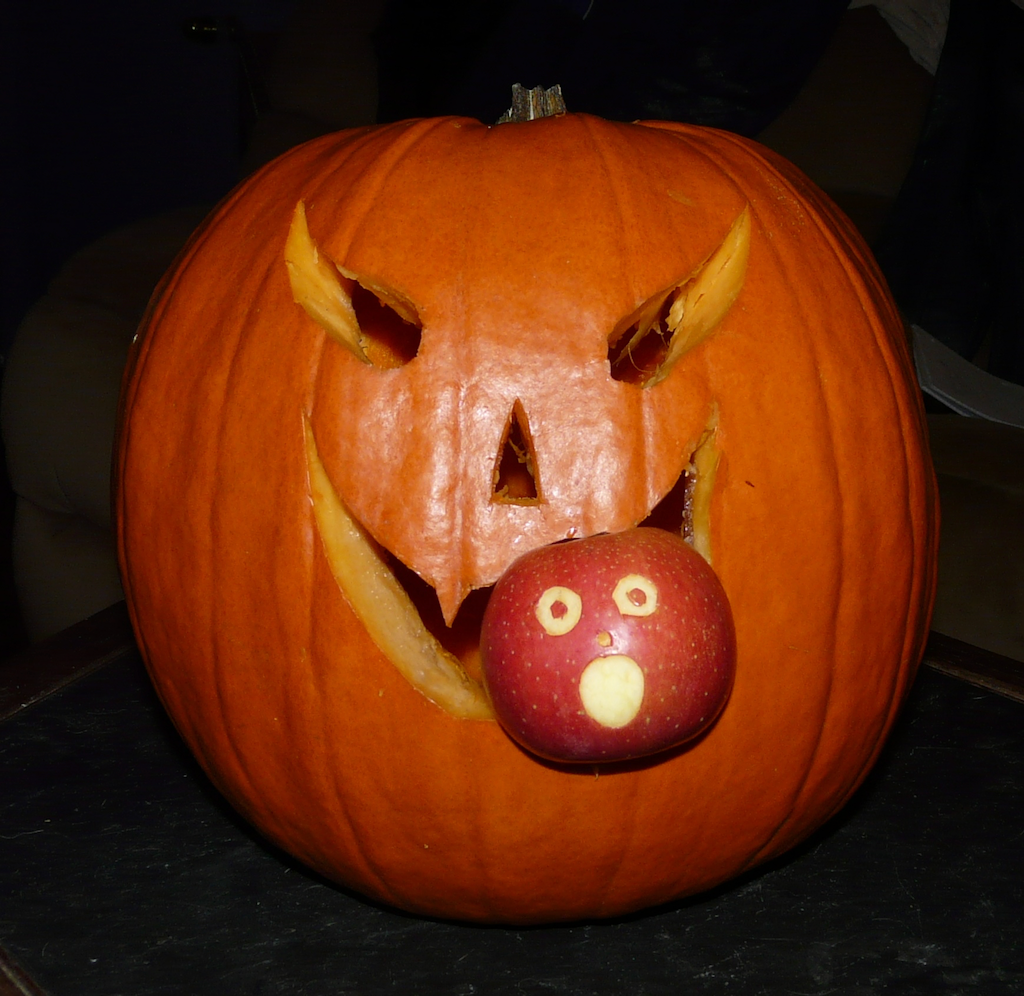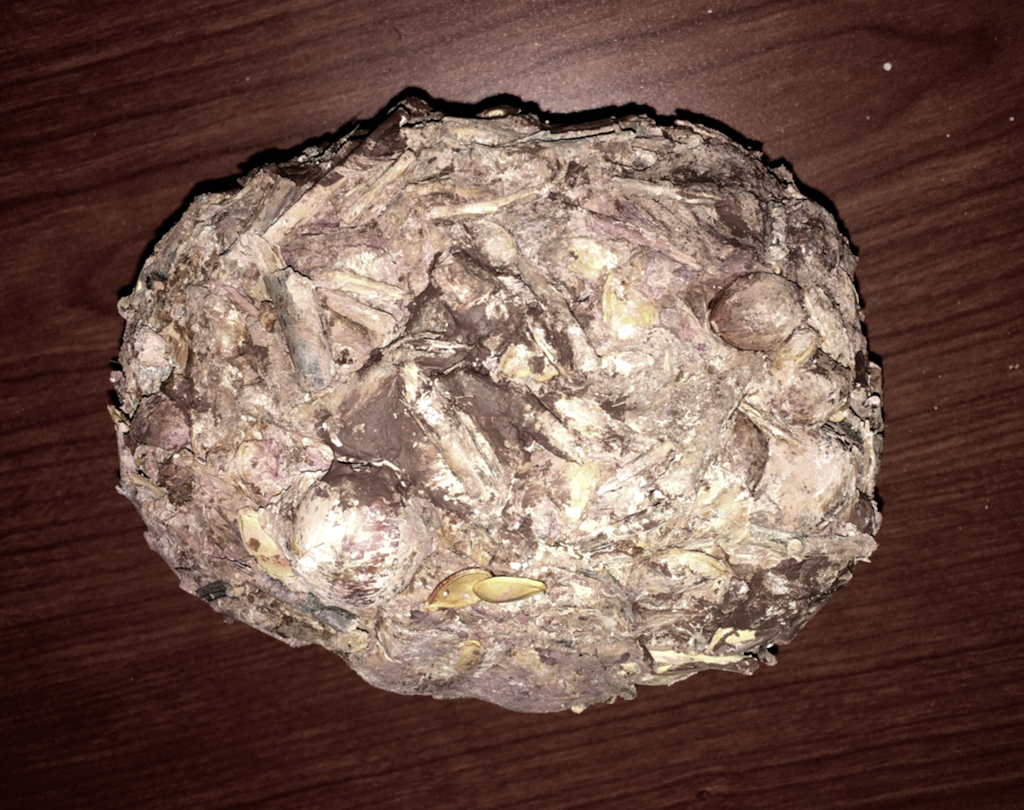 Pumpkins are an interesting fruit. Curcurbita pepo is one of several domesticated species of the genus Curcurbita, vines that are native to the Americas. Curcurbita is a ecologically diverse genus, with some species needing a continuous water supply while others can live in arid conditions, so it is found natively in a variety of habitats. The fruits, which are technically berries, generally have a thick rind with a softer interior where the seeds are located. In most species the rinds are bitter, but the interior is often more palatable and rich in nutrients. As a result it became one of the first domesticated plants in North America more than 8,000 years ago.With large, nutritious fruits, we can be confident that wild Curcurbita were being eaten by more than just humans. In 2006 Lee Newsom and Matthew Mihlbachler published a detailed report about an American mastodon dung deposit in northern Florida. The vast majority of the dung consisted of small cypress twigs, chopped up and stripped of bark, but there were other plant remains from at least 57 species. Among their samples were 156 Curcurbita seeds, showing that this was a popular item on the mastodon menu. Using the Newsom and Mihlbachler paper as a guide, a few years ago we made a simulated piece of mastodon dung for exhibit at WSC, including numerous pumpkin and squash seeds:
Pumpkins are an interesting fruit. Curcurbita pepo is one of several domesticated species of the genus Curcurbita, vines that are native to the Americas. Curcurbita is a ecologically diverse genus, with some species needing a continuous water supply while others can live in arid conditions, so it is found natively in a variety of habitats. The fruits, which are technically berries, generally have a thick rind with a softer interior where the seeds are located. In most species the rinds are bitter, but the interior is often more palatable and rich in nutrients. As a result it became one of the first domesticated plants in North America more than 8,000 years ago.With large, nutritious fruits, we can be confident that wild Curcurbita were being eaten by more than just humans. In 2006 Lee Newsom and Matthew Mihlbachler published a detailed report about an American mastodon dung deposit in northern Florida. The vast majority of the dung consisted of small cypress twigs, chopped up and stripped of bark, but there were other plant remains from at least 57 species. Among their samples were 156 Curcurbita seeds, showing that this was a popular item on the mastodon menu. Using the Newsom and Mihlbachler paper as a guide, a few years ago we made a simulated piece of mastodon dung for exhibit at WSC, including numerous pumpkin and squash seeds: Newsom and Mihlbachler also noted that, while Curcurbita seeds were relatively common in their sample, rind fragments were almost completely absent. It seems that mastodons may have disliked the bitter rinds just like we do, and broken the gourds open to get at the interior. Captive elephants that are fed pumpkins seem to have discovered the same trick:[youtube https://www.youtube.com/watch?v=2CzXH2Eg1hw&w=560&h=315]So far no Pacific mastodon coprolites have been identified, but hopefully one day we'll be able so say as much about their dietary habits.Reference:Lee Newsom and Matthew C. Mihlbachler, 2006. Mastodon (Mammut americanum) diet and foraging patterns based on analysis of dung deposits. Chapter 10 in S. David Webb (ed.), First Floridians and Last Mastodons: The Page-Ladson Site in the Aucilla River, Springer, p. 263-331.
Newsom and Mihlbachler also noted that, while Curcurbita seeds were relatively common in their sample, rind fragments were almost completely absent. It seems that mastodons may have disliked the bitter rinds just like we do, and broken the gourds open to get at the interior. Captive elephants that are fed pumpkins seem to have discovered the same trick:[youtube https://www.youtube.com/watch?v=2CzXH2Eg1hw&w=560&h=315]So far no Pacific mastodon coprolites have been identified, but hopefully one day we'll be able so say as much about their dietary habits.Reference:Lee Newsom and Matthew C. Mihlbachler, 2006. Mastodon (Mammut americanum) diet and foraging patterns based on analysis of dung deposits. Chapter 10 in S. David Webb (ed.), First Floridians and Last Mastodons: The Page-Ladson Site in the Aucilla River, Springer, p. 263-331.
